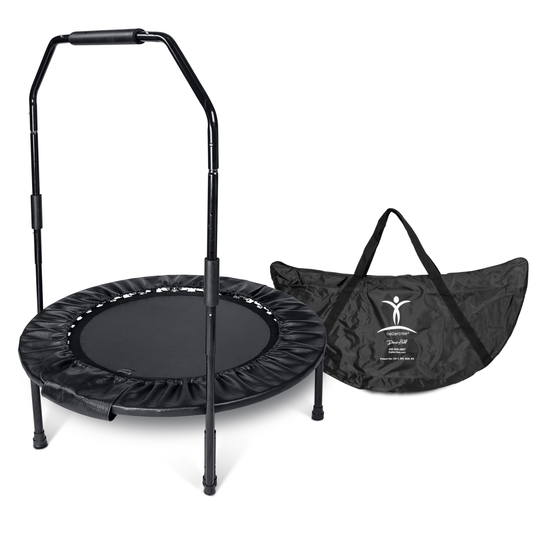Disclaimer: This Blog/Web Site is made available by the publisher for educational purposes only as well as to give general information & understanding regarding the industry. It is not to be used as specific medical advice or to replace consulting with your doctor. You should always consult with your doctor. By using this Blog / Web Site you understand that this Blog/Web Site should not be used as a substitute for medical advice from a licensed professional. For our full disclaimer, please read: Cellercise® Disclaimer
Everyone experiences stress in their lives. It can’t be completely eliminated but it can be managed. If not managed well, stress can lead to dangerous consequences for your health. Almost all adults suffer negative health effects from stress at least occasionally. Stress can cause or exacerbate: High blood pressure Heart disease Headaches Asthma Arthritis Depression Anxiety Skin conditions Stress is even considered a workplace hazard by the Occupational Safety and Health Administration (OSHA). Exercise is one of the best stress relievers because your body releases endorphins. The brain and the nervous system excrete these feel-good hormones that can relieve stress. It can feel so good that some people spend a lot of time seeking out an “endorphin rush” through extreme sports. Exercise such as rebounding is good for your health in many ways. But when it comes to fighting stress, rebounding has direct and in-direct benefits that decrease the negative impact of stress on the body. A few of the benefits of rebounding: Meditative. Vigorous exercise takes your mind off of your troubles. After a few minutes on your rebounder, you’ll find that the day’s tensions have melted away. As you do this for just a few minutes each day, your outlook will improve and the little things that used to cause you stress won’t seem so bothersome anymore. Anti-depressant. Rebounding can boost the brain’s production of brain-developed neurotrophic factor (BDNF). This protein assists neurotransmitters to function optimally. This can help depressed people feel better. Relieves anxiety. People who use rebounders report feeling less anxious, jittery, or hyperactive upon completing a session. Relaxing. The body experiences a relaxation response after a single session of rebounding. It creates a post-exercise euphoria that relaxes your whole body. Increases alertness. Rebounding causes large muscle groups in the body to contract and relax repeatedly. When this happens, the brain gets a signal from the body that it’s time to release neurotransmitters that can cause you to feel more alert. Boosts confidence. It’s an empowering feeling to fly through the air on a rebounder. Each time you finish a session you feel a sense of accomplishment that boosts your self-esteem. Improves sleep. People who exercise regularly, sleep better at night. Getting a good night’s sleep is essential to keeping stress levels low. Energizing. Just 10 minutes on your rebounder gets your blood pumping and you feel moreenergized and less stressed. Detoxifies. Rebounding has been shown to activate the lymphatic system that detoxifies the body and improves the immune system. Improves diet. Exercising regularly can subconsciously support healthy eating habits. The feeling of empowerment over the body translates into wanting to treat the body well.
Your Brain on Stress
The brain has many nerve connections, and stress can affect these connections. When that happens, the rest of the body suffers, as well. Just like the brain can affect the body, the reverse is also true. Exercise such as rebounding produces endorphins which act as a natural painkiller. They also improve sleep, and sleeping better reduces stress.
Creating the Habit
Creating a new habit can be challenging and takes time. Some tips for making a workout part of your normal routine: 21 Days. On average, it takes 21 days for a new habit to take hold. Set a goal to stick it out for at least 21 days for it to start to feel normal. Fall in love. Fall in love with the activity you choose. Don’t plan to do something that you hate – you’ll never do it. Rebounding has the added bonus of being joyous. Bouncing on a trampoline is fun no matter why you’re doing it. Schedule it. Put it into your calendar. Don’t wait for the time to magically appear. It won’t. Just like other important appointments in life, but this appointment is with yourself. Put it in there and stick with it. The beauty of rebounding is that you can do it in increments of just a few minutes each. It’s easy to fit in something that quick. Be SMART. Use the SMART goal system to create a goal that you can stick with: Specific, Measurable, Attainable, Relevant, and Time-delineated. Don’t just say that you’ll work out each day – how long will the workout be and what time are you scheduling it for? Buddy system. Find a friend to work out with. You don’t even have to work out at the same time or in the same place. Having another person who is also working on an exercise goal will help you hold each other accountable. Better yet, find someone who will rebound with you! Keep it incremental. The goal doesn’t have to be to do an hour a day of exercise. That’s probably not realistic for someone just starting out. Short bursts of activity are very effective. The rebounder system is designed to do in just 10 minutes a day! The Cellercise® Rebounder’s quiet, portable, high-quality design makes it the perfect rebounder for anyone – whether you’re just starting out or are a seasoned pro.
NOTE: Remember to always consult with your doctor or health professional before starting new exercise routines.
Get Your Cellerciser® and start rebounding today!














